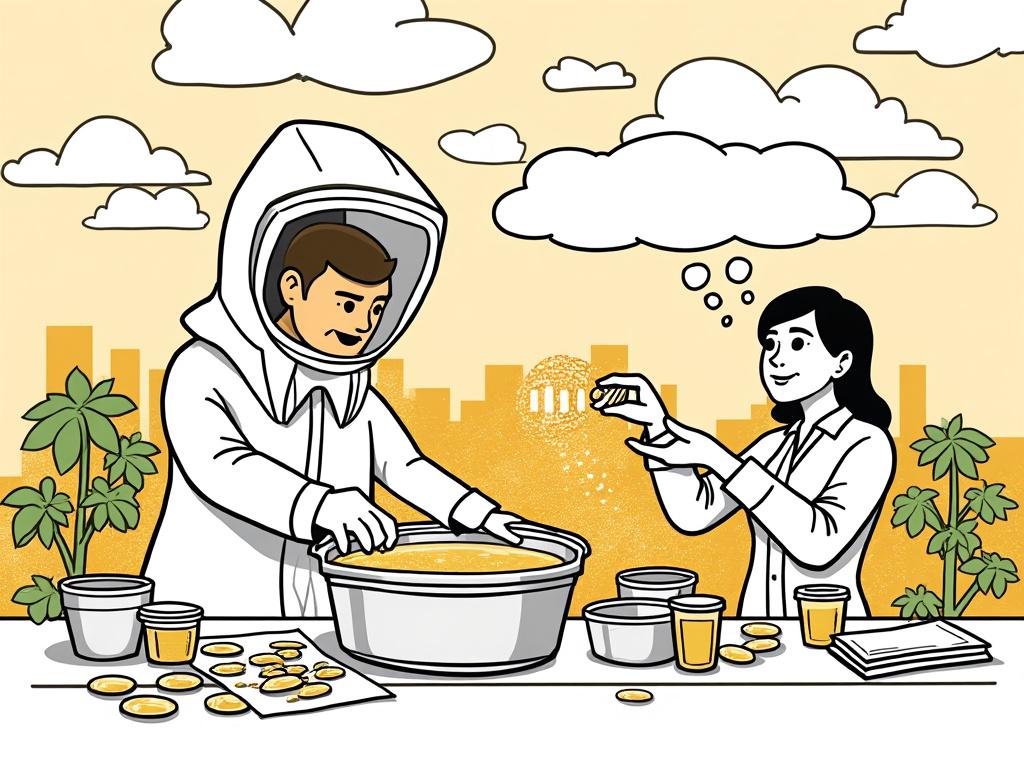
Honey Production in Greece: Ancient Traditions Meet Modern Excellence
Reading time: 12 minutes
Table of Contents
- Greece’s Golden Heritage in Beekeeping
- The Modern Production Landscape
- Distinctive Greek Honey Varieties
- Challenges and Market Opportunities
- Economic Impact and Export Potential
- Your Sweet Success Roadmap
- Frequently Asked Questions
Greece’s Golden Heritage in Beekeeping
Ever wondered why Greek honey commands premium prices in international markets? The answer lies in a 4,000-year tradition that transforms Greece’s diverse landscape into liquid gold.
Greece isn’t just another honey producer—it’s a beekeeping powerhouse where ancient wisdom meets modern sustainability. From the sun-drenched islands of the Aegean to the mountainous regions of northern Greece, this Mediterranean nation produces some of the world’s most sought-after honey varieties.
Historical Foundations
The story begins in antiquity. Archaeological evidence from Crete shows honey production dating back to 2400 BCE, making Greece one of humanity’s oldest beekeeping civilizations. The ancient Greeks didn’t just harvest honey—they revolutionized the practice, developing techniques still used today.
Quick Scenario: Picture yourself as an ancient Athenian beekeeper. Your hives weren’t just sources of sweetness—they were economic engines powering trade across the Mediterranean. This legacy continues today, with Greek honey exports reaching over 40 countries worldwide.
The Modern Production Landscape
Today’s Greek honey industry represents a fascinating blend of traditional methods and cutting-edge sustainability practices. With approximately 1.6 million beehives scattered across the country, Greece ranks among Europe’s top honey producers per capita.
Geographic Advantages
Greece’s unique geography creates perfect conditions for exceptional honey production:
- Diverse Flora: Over 6,000 plant species provide nectar sources
- Clean Environment: Minimal industrial pollution preserves honey purity
- Mediterranean Climate: Long flowering seasons extend production periods
- Island Ecosystems: Isolated environments create unique flavor profiles
The numbers tell a compelling story. Greece produces approximately 17,000 tons of honey annually, with an average yield of 12-15 kg per hive—significantly higher than the European average of 8-10 kg.
Regional Production Hotspots
Greek Honey Production by Region (Annual Output)
4,200 tons (25%)
3,600 tons (21%)
3,000 tons (18%)
2,400 tons (14%)
Distinctive Greek Honey Varieties
Here’s where Greek honey production truly shines—variety and quality that reflects the country’s botanical diversity. Each region produces honey with distinct characteristics, creating a portfolio that appeals to different market segments.
Premium Varieties
Thyme Honey (Thymarisio): The crown jewel of Greek honey production. Harvested primarily from wild thyme growing on Greek islands, this amber-colored honey commands premium prices due to its intense aroma and therapeutic properties. Production centers in Crete and the Cyclades islands produce approximately 2,000 tons annually.
Pine Honey: Unique to Mediterranean regions, Greek pine honey accounts for 60% of total production. Unlike floral honeys, pine honey derives from honeydew secretions of pine trees, creating a darker, mineral-rich product with exceptional shelf life.
Fir Honey: Produced in mountainous regions like Mount Parnassus, fir honey represents the premium end of Greek production. Its limited availability—only 800 tons annually—makes it one of Europe’s most expensive honey varieties.
Market Positioning Success Story
Consider the case of Dimitris Papadopoulos, a third-generation beekeeper from Mani Peninsula. By focusing exclusively on thyme honey production and implementing organic certification, he increased his profit margins by 340% over five years. His honey now sells in premium delicatessens across Germany and the UK, demonstrating how specialization creates competitive advantage.
| Honey Variety | Production Volume | Export Price (€/kg) | Main Markets | Unique Properties |
|---|---|---|---|---|
| Pine Honey | 10,200 tons | €6.50 | Germany, Italy, USA | High mineral content, dark color |
| Thyme Honey | 2,000 tons | €12.80 | UK, France, Japan | Antibacterial properties, intense aroma |
| Fir Honey | 800 tons | €15.20 | Switzerland, Austria, Canada | Limited production, premium quality |
| Orange Blossom | 1,500 tons | €8.90 | Netherlands, Belgium, Sweden | Light color, citrus notes |
| Wildflower | 2,500 tons | €5.30 | Bulgaria, Romania, Serbia | Complex flavor profile, seasonal variation |
Challenges and Market Opportunities
Like any agricultural sector, Greek honey production faces both challenges and exciting opportunities. Understanding these dynamics helps explain current market positioning and future potential.
Current Challenges
Climate Change Impact: Rising temperatures and irregular rainfall patterns affect flowering seasons. Dr. Maria Kanakis from the Agricultural University of Athens notes: “We’ve observed a 15% reduction in spring flowering duration over the past decade, forcing beekeepers to adapt their migration patterns.”
Varroa Mite Infestations: This parasitic mite causes annual colony losses of 20-25% across Greece. However, innovative beekeepers are turning this challenge into opportunity through integrated pest management programs that maintain organic certification while protecting hive health.
Market Competition: Low-cost honey imports from China and Argentina pressure domestic prices. Yet Greek producers successfully compete through quality differentiation and origin certification.
Strategic Opportunities
Organic Certification Growth: Organic honey commands 40-60% premium prices. Currently, only 30% of Greek honey production is certified organic, presenting significant expansion opportunity.
Medical and Therapeutic Markets: Research validating honey’s antimicrobial properties opens pharmaceutical applications. Greek thyme honey’s proven antibacterial activity creates competitive advantage in health-conscious markets.
Agritourism Integration: Many beekeepers supplement income through farm visits and educational programs. This trend aligns perfectly with Greece’s tourism industry, particularly in regions where visitors seek authentic cultural experiences. Those considering long-term investment in Greek agricultural tourism might explore houses for sale in athens as strategic bases for such ventures.
Success Story: Adaptive Innovation
The Cooperative of Beekeepers of Mani Peninsula exemplifies successful adaptation. Facing declining yields from traditional locations, they invested in mobile beekeeping equipment and developed rotation schedules following optimal flowering patterns. This innovation increased average yields by 28% while maintaining organic certification.
Economic Impact and Export Potential
Greek honey production generates approximately €180 million annually in direct economic value, supporting over 25,000 families across rural communities. However, the sector’s impact extends far beyond these numbers.
Export Performance
Greece exports roughly 8,500 tons of honey annually, representing 50% of total production. This export intensity demonstrates strong international competitiveness and quality recognition.
Key Export Insights:
- Germany represents 35% of Greek honey exports
- Average export price of €7.80/kg exceeds EU average by 23%
- Organic honey exports grew 45% over the past three years
- Premium varieties (thyme, fir) achieve export prices exceeding €15/kg
Value Chain Development
Modern Greek honey production increasingly focuses on value-added products. Honey-based cosmetics, medicinal preparations, and artisanal food products create additional revenue streams while strengthening brand positioning.
Practical Roadmap for Market Entry:
- Quality Certification: Obtain organic and origin certification
- Product Differentiation: Focus on unique varieties with compelling stories
- Distribution Partnerships: Build relationships with specialty food retailers
- Brand Development: Emphasize Greek heritage and quality tradition
Pro Tip: Success in honey production isn’t just about beekeeping—it’s about creating authentic stories that connect consumers with Greece’s natural heritage and artisanal traditions.
Your Sweet Success Roadmap
Ready to tap into Greece’s golden honey opportunity? Whether you’re an aspiring beekeeper, investor, or food entrepreneur, here’s your strategic action plan:
Immediate Implementation Steps
1. Market Research and Niche Selection
Identify your target honey variety based on local flora and market demand. Thyme honey offers highest margins but requires specific geographic conditions, while pine honey provides stable volume with consistent demand.
2. Regulatory Compliance and Certification
Obtain necessary permits through Greece’s Ministry of Agriculture. Pursue organic certification early—the 18-month transition period for organic status means starting immediately maximizes long-term profitability.
3. Location and Infrastructure Development
Secure apiaries in optimal locations with diverse nectar sources. Consider mobile beekeeping setups for accessing seasonal flowering patterns across different regions.
4. Partnership and Distribution Strategy
Build relationships with established honey cooperatives for initial market access. Develop direct sales channels through farmers’ markets and online platforms for premium pricing.
5. Technology Integration
Invest in modern hive monitoring systems and honey processing equipment. Digital tools reduce labor costs while improving quality consistency—critical factors for export market success.
Long-term Growth Opportunities
The future of Greek honey production lies in combining traditional excellence with innovative market approaches. Climate adaptation, sustainable practices, and premium positioning will separate successful operations from struggling competitors.
As global demand for natural, traceable food products continues growing, Greek honey producers holding quality certifications and compelling origin stories will capture disproportionate value. The question isn’t whether opportunities exist—it’s whether you’ll position yourself to seize them.
What’s your next move in Greece’s golden honey revolution?
Frequently Asked Questions
What makes Greek honey different from other European varieties?
Greek honey benefits from unique geographic and climatic conditions, including diverse Mediterranean flora, minimal industrial pollution, and traditional production methods passed down through generations. The high percentage of pine honey (60% of production) is particularly distinctive, as this variety is rare outside the Mediterranean region. Greek honey also maintains higher mineral content and distinctive flavor profiles due to the country’s varied landscapes and long flowering seasons.
How profitable is honey production in Greece for new beekeepers?
Profitability varies significantly based on scale, location, and market strategy. Small-scale operations (20-50 hives) can generate €15,000-35,000 annually, while larger commercial operations exceed €100,000. Key success factors include organic certification (40-60% price premium), direct sales channels, and focusing on premium varieties like thyme or fir honey. Initial investment ranges from €8,000-15,000 for equipment and hives, with break-even typically achieved within 2-3 years.
What are the main challenges facing Greek honey producers today?
The primary challenges include climate change affecting flowering patterns, Varroa mite infestations causing 20-25% annual colony losses, and competition from low-cost imports. Additionally, aging beekeeping population and limited access to optimal apiary locations create ongoing concerns. However, successful producers overcome these challenges through integrated pest management, mobile beekeeping practices, organic certification, and focusing on premium market segments that value quality over price.

Article reviewed by Victor Moreau, Timberland & Natural Resources | Sustainable Asset Monetization, on June 4, 2025
